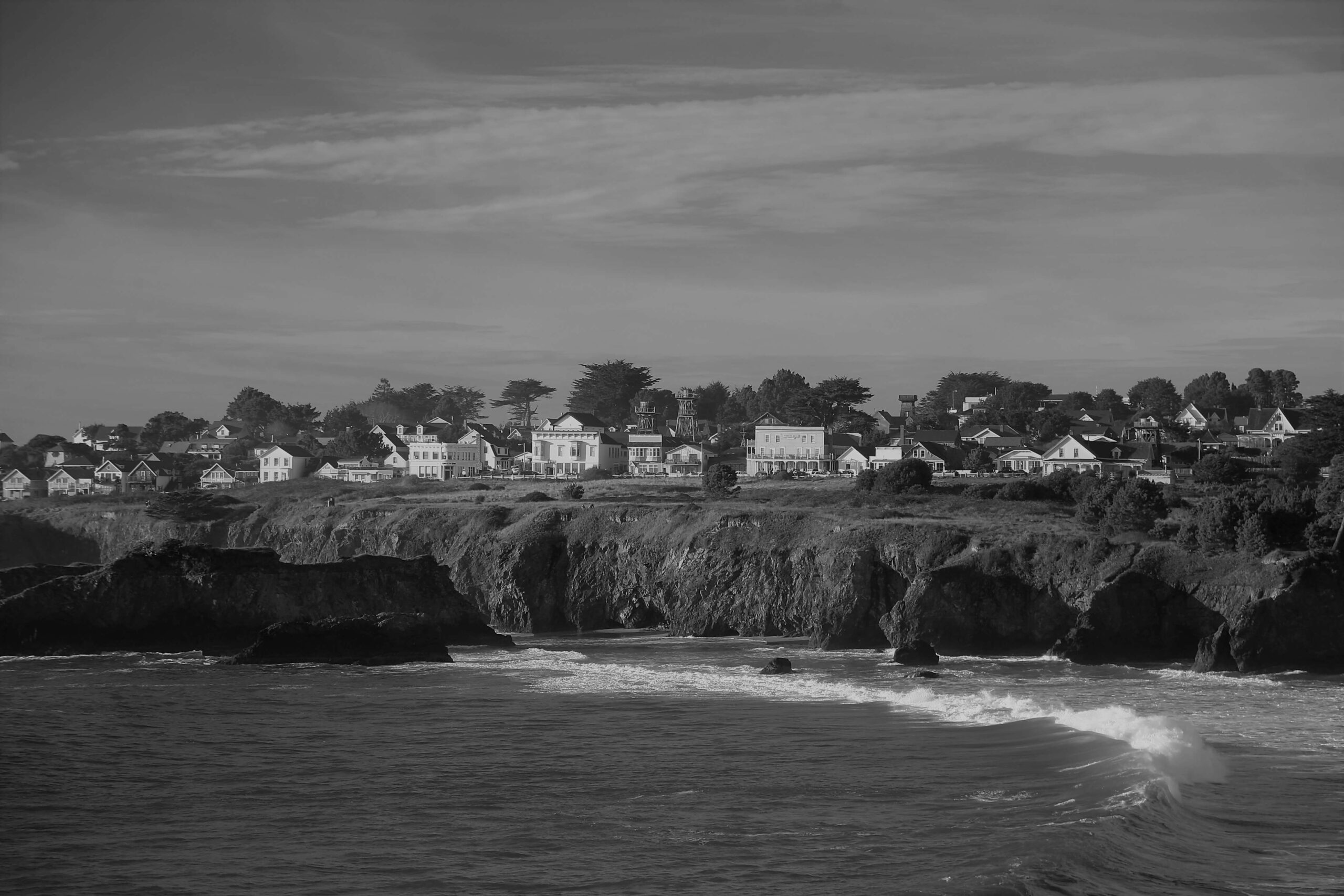
History of the Mendocino Coast
Mendocino human history begins with the Pomo Indians who lived at the mouth of Big River. They existed in peace there for thousands of years. Then in 1850, news of a wrecked clipper ship reached San Francisco. A crew was sent north to salvage the cargo. They didn’t find the cargo, but they saw enormous stands of giant redwood trees. This discovery led to the start of the lumber industry, and the beginning of Mendocino Village in 1851. Most of the buildings in Mendocino were built in the heyday of the lumber boom, and reflect the New England roots of the prominent citizens. The town began a decline in 1934 when the lumber mill closed. It wasn’t until 1957 that Mendocino was rediscovered by artists who founded the Mendocino Art Center in 1959. In 1960 the western headlands became a state park. In 1969, the threat of commercial development spurred locals to push to have the southern headlands included in the park. More work by locals led to the 1971 naming of the whole town an Historic District, with a listing on the National Register of Historic Places.
The peace and beauty in which the Pomos existed, along with the legacy of artists, preservationists and independent local residents are what make Mendocino the wonderful place that it is today.
Kelley House Museum — 2 blocks down Main Street. History of Mendocino, archives, books, photos, research center.
Ford House Museum — 2 blocks down Main Street. Local natural and human history. Model of 1890’s Mendocino.
Point Cabrillo Light Station — 3 miles north. ½ mile walk from parking area to beautiful and rugged headlands, light station under restoration.
Point Arena Light House — 60 minutes south. Windswept headlands, museum, and a climb to the top of the tower.
Temple Kwan Tai — 4 blocks. 1882 Taoist temple. Open to the public on special occasions.
Guest House Museum — 20 minutes north, in Fort Bragg. Coastal history.
